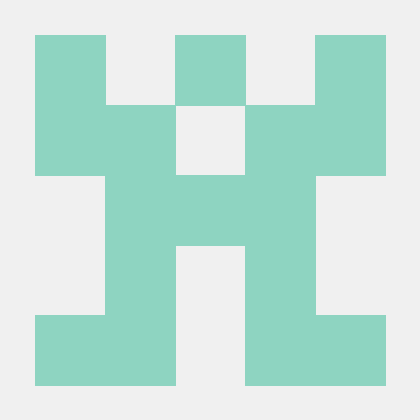This page shows all 55 questions in the research agenda.
You can also see the questions arranged into Themes
| Code | Question | Contributors |
|---|---|---|
| Q1 | What common errors do students make when answering online assessment questions? |








|
| Q2 | Do the errors students make in e-assessments differ from those they make in paper-based assessments? |


|
| Q3 | What are the approaches to detecting and feeding back on students’ errors? |





|
| Q4 | How can content-specific features of provided feedback, for instance explanations with examples versus generic explanations, support students' learning? |


|
| Q5 | What are the linguistic features of feedback that help students engage with and use feedback in an online mathematical task at hand and in future mathematical activities? |

|
| Q6 | What difficulties appear when designing e-assessment tasks that give constructive feedback to students? |



|
| Q7 | How can feedback that is dynamically tailored to the student’s level of mathematical expertise help a student use feedback on mathematical tasks effectively? |

|
| Q8 | How useful for students’ long-term learning is feedback that gives a series of follow-up questions, from a decision tree, versus a single terminal piece of feedback? |


|
| Q9 | What are the relative benefits of e-assessment giving feedback on a student’s set of responses (e.g. “two of these answers are wrong – find which ones and correct them”), rather than individual responses separately? |




|
| Q10 | Under what circumstances is diagnosing errors worth the extra effort, as compared with generally addressing errors known to be typical? |




|
| Q11 | What are the relative merits of addressing student errors up-front in the teaching compared with using e-assessment to detect and give feedback on errors after they are made? |



|
| Q12 | In what circumstances is instant feedback from automated marking preferable to marking by hand? |

|
| Q13 | How do students interact with an e-assessment system? |




|
| Q14 | To what extent does repeated practice on randomized e-assessment tasks encourage mathematics students to discover deep links between ideas? |




|
| Q15 | How do students engage with automated feedback? What differences (if any) can be identified with how they would respond to feedback from a teacher? |




|
| Q16 | What should students be encouraged to do following success in e-assessment? |

|
| Q17 | What are students' views on e-assessment, and what are their expectations from automated feedback? |












|
| Q18 | How might dyslexic, dyscalculic and other groups of students be disadvantaged by online assessments rather than paper-based assessments? |

|
| Q19 | How can peer assessment be used as part of e-assessment? |


|
| Q20 | How can e-assessment be used in group work, and what effect does the group element have on individuals' learning? |



|
| Q21 | What design methodologies and principles are used by e-assessment task designers? |


|
| Q22 | What principles should inform the design of e-assessment tasks? |


|
| Q23 | E-assessment task designers often convert questions that could be asked on a traditional pen and paper exam: what are the implications, technicalities, affordances and drawbacks of this approach? |


|
| Q24 | To what extent does the randomisation of question parameters, which makes sharing answers between students difficult, adequately address plagiarism? |


|
| Q25 | What effect does the use of random versions of a question (e.g. using parameterised values) have on the outcomes of e-assessment? |



|
| Q26 | When writing multiple choice questions, is student learning better enhanced using distractors based on common errors, or randomly-generated distractors? |

|
| Q27 | How can formative e-assessments improve students’ performance in later assessments? |





|
| Q28 | How can regular summative e-assessments support learning? |


|
| Q29 | What are suitable roles for e-assessment in formative and summative assessment? |


|
| Q30 | To what extent does the timing and frequency of e-assessments during a course affect student learning? |

|
| Q31 | What are the relations between the mode of course instruction and students' performance and activity in e-assessment? |

|
| Q32 | What advice and guidance (both practical and pedagogical) is available to lecturers about using e-assessment in their courses, and to what extent do they engage with it? |


|
| Q33 | What might a “hierarchy of needs” look like for lecturers who are transitioning to increased use of e-assessments? |


|
| Q34 | How can lecturers be informed about how students interact with e-assessment tasks, and so help lecturers act upon these findings in an effective way? |


|
| Q35 | What types of reasoning are required to complete current e-assessments? |


|
| Q36 | To what extent do existing e-assessments provide reliable measures of mathematical understanding, as might otherwise be measured by traditional exams? |

|
| Q37 | How can e-assessment support take-home open-book examinations? |

|
| Q38 | What developments at the forefront of e-assessment (such as artificial intelligence) can we apply to undergraduate mathematics? |

|
| Q39 | What methods are available for student input of mathematics? |

|
| Q40 | How can the suitability of e-assessment tools for summative assessment be improved by combining computer-marking and pen-marking? |

|
| Q41 | Are there differences in performance on mathematics problems presented on paper versus as e-assessments? |


|
| Q42 | How can we automate the assessment of work traditionally done using paper and pen? |

|
| Q43 | How can we emulate human marking of students’ working such as follow-on marking and partially correct marking? |

|
| Q44 | How can e-assessment using comparative judgment support learning? |


|
| Q45 | How can comparative judgement be used for e-assessment? |

|
| Q46 | How can we assess problem solving using e-assessment? |

|
| Q47 | How can we assess open-ended tasks using e-assessment? |


|
| Q48 | How can e-assessments provide scaffolding (cues, hints) during and after problem-solving tasks? | |
| Q49 | How can the assessment of proof be automated? |


|
| Q50 | What can automated theorem provers (e.g. LEAN) offer to the e-assessment of proof comprehension? |


|
| Q51 | What types/forms of proof-comprehension-related questions can be meaningfully assessed using currently available e-assessment platforms? |

|
| Q52 | How can students effectively type free-form proof for human marking online? |

|
| Q53 | How can e-assessments be designed to expand and enrich students' example spaces? |


|
| Q54 | To what extent can e-assessments meaningfully judge student responses to example generation tasks? |




|
| Q55 | How does the use of e-assessment impact students’ example generation strategies and success, relative to the same tasks on paper or orally? |

|